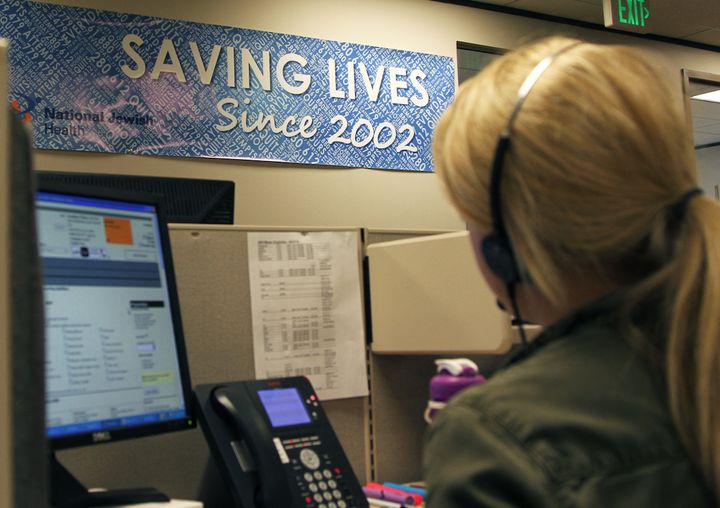
Since 1964, when the U.S. Surgeon General first reported that the risks from smoking could not be ignored, tobacco use in the United States has plummeted. More than 40 percent of Americans smoked cigarettes in 1965. Over the last half-century, that smoking rate has fallen by half.
And yet for some populations, the needle has barely moved. In fact, one of the U.S. demographics most burdened by tobacco’s wrath of illness and death are LGBT communities. Alarming rates of tobacco use are a direct result of targeted marketing to LGBT communities by the tobacco industry, a full third of LGBT Americans smoke – more than twice the rate of the general U.S. population.
Seemingly benign in our culture and yet claiming far more lives than drugs or alcohol, tobacco kills nearly half a million Americans every year. For those within LGBT communities, and those of us who support them, this is a current killer that must be eradicated.
A heavy burden
As with all addiction, tobacco would not be such a danger if it didn't provide comfort in a world full of conflict. Within a society that remains divided about LGBT equality, it will surprise no one that the level of continual discrimination increases the likelihood of tobacco use and addiction.
Adolescence is a time marked by the importance of peers and experimentation with high-risk behaviors. For LGBT youth, it is an age when many come out to family and friends. This causes many stressors of fear of non-acceptance by the people closest to them, often experiencing discrimination from these family and friends. This can be a major contributor to the rates of tobacco use among LGBT youth, which can be as high as 59 percent.
With tobacco, the addiction factor is very high. When young people already navigating extreme societal, and often familial, pressures are surrounded by peers trying out smoking, it's a perfect storm. Throughout life, as similar stresses compound for many—too often becoming mental health challenges or further addictions—the rate of smoking within the LGBT community remains high.
Against that backdrop are highly targeted, and effective, advertising campaigns from the tobacco industry. It isn't news that tobacco advertising has been a major driver in tobacco addiction, but few people realize how innovative that advertising has been in targeting LGBT Americans.
The ads are prevalent in magazines and publications for LGBT communities, and portray an industry that is supportive all while killing its users: One example reads, "Whenever someone yells, 'Dude, that's so gay,' we'll be there."
Or from another: "Freedom. To speak. To choose. To marry. To participate. To be. To disagree. To inhale. To believe. To love. To live. It's all good."
The ads convey a notion of tobacco supporting LGBT rights, basically stating, "we're here for you," and they are enhanced by popular sponsored events and a range of highly focused campaigns.
Just as most of us had been unaware of such targeting, few are aware of the extent of tobacco's prevalence in LGBT communities, and the risks it presents. While most LGBT Americans believe there are other health issues that put the community at risk, tobacco is the number one threat, just as it is for everyone else. It's an equal opportunity killer.

A tobacco cessation coach speaks to a quitline caller at National Jewish Health in Denver, Colorado, the largest non-profit quitline in the U.S.
Changing course
When all the facts are on the table, this becomes a clear issue of social justice. During the last decade, LGBT Americans have started taking action by bringing awareness to issues around targeted marketing and blatant disregard of life by the tobacco industry and trying to eliminate it. Any one of us can be an advocate for change in when faced with injustice.
Driven by those national efforts from within LGBT communities, there are now resources to both educate Americans about these challenges and provide tobacco users with help to quit.
One of the most comprehensive tools for raising awareness is the LGBT HealthLink. One of eight national action networks funded by the U.S. Centers for Disease Control and Prevention (CDC), the site has a dual focus on tobacco and cancer, and the resources it provides to share the truth about the high rate of LGBT tobacco use are comprehensive.
Too many people are still operating on myths–the message must get out that tobacco addiction is killing people and that we can support each other to do something about it. However, educating LGBT communities about this problem, and that there are evidence-based tools to quit, is just the first step. Step two is helping people actually give up tobacco.
I've worked in this field for 17 years. We know what works to quit – what actions people can take to fight addiction and regain control. Cessation programs and quitlines do work.
In our QuitLine at National Jewish Health, we have helped more than half a million Americans since we launched in 2002. We have been working with LGBT HealthLink over the past nine years to train our staff to specifically understand and address the unique challenges facing LGBT Americans, and our outreach to share the unique risks and challenges has stemmed from that collaboration.
For more information, there are several leading resources. In addition to the aforementioned LGBT HealthLink, the National LGBT Tobacco Control Network connects similarly motivated individuals, while the Truth Initiative provides detailed statistics and context.
In the face of misunderstanding, discrimination and lack of trust, all of us have a responsibility to learn more about smoking's risks and cessation. We must gather recommendations and share that knowledge. Only then can we hope to reverse the tobacco trends that have plagued LGBT communities for decades and help more of us take control of longer, healthier lives.
